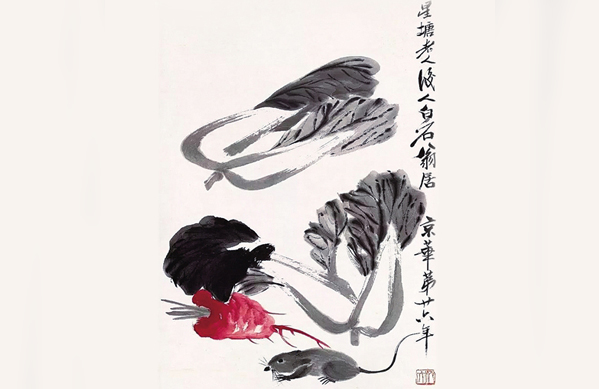On the rat/mouse of the zodiac

A painting of a rat by famous Chinese painter Qi Baishi Photo: FILE
This year is the Year of Gengzi, according to the Stem-Branch Calendar, the method in which the ancient Chinese designate years according to the Heavenly Stems and Earthly Branches. In Chinese zodiac culture, each of the 12 animals represents an Earthly Branch and is used to number years and record a person’s age.
On this year, a new round of the 12-year cycle of the Chinese zodiac has begun, and the rat (or mouse, as the character shu can be translated as either) is the corresponding symbolic animal.
What makes the rat, so small in size and ordinary in appearance, rank first among the 12 zodiac animals, before the dauntless dragon and the lively tiger?
Above all, the rat has a time-honored living history, and they have lived longer than human beings on earth. Moreover, rats exist in vast numbers. Where there are people, there are rats—they have a close relationship with humanity.
Every year, an animal is on duty to make the silent years vivid, turning a boring year number into an interesting cultural topic. The zodiac culture embodies the wisdom of the Chinese people who love life and live in harmony with nature.
Despite the fact that the rat is small in stature and notorious in reputation, it shares equal status with the majestic dragon, fierce tiger and colorful chicken as the animal on duty of the year. That the rat comes first in the 12-animal cycle demonstrates Chinese people’s desire for all living things to be equal.
The zodiac culture has a long history and there is no authoritative explanation as to how it came into being. For the ancients, they often used many interesting fairy tales to interpret it.
The rat has two major characteristics. One is that it is good at gnawing, with amazingly strong determination. As long as it sets its target, even if the target is a wall of bronze or iron and even if it can only make a tooth-mark a day, it will never relent. Not until a hole is gnawed through will it stop.
The rat’s other characteristic is the skill at stealing. In order to bring cereal grains to humanity, it snuck into the treasure box of the Heavenly Matriarch (a legendary Chinese figure), stole seeds away and gave them to humans as presents. That was how humans were able to eat cereal grains and how a good harvest was ensured.
Although many myths and legends have been made up by people to beatify the rat, and a lot of their lovely images have been recreated in works of art, it is still hard for them to escape the common perception of the Chinese saying that “a rat crossing the street is chased and detested by all.” Moreover, rats are quite hard to eradicate. There is even a folk story called “The Rat Daughter’s Marriage.” It is said that on Lunar New Year’s Eve, people send their household rat off to marry a civet cat, as a way to solve the trouble with storing food. Cats are considered the enemies of rats, and their marriage symbolizes the rat’s end.
While people count the evils of the rat, they also come to fully realize its benign nature. This is the wisdom of recording the years with animals.
With great agility and dexterity, the rat is quick-witted and sharp-minded. Before an earthquake, it often sends early warning signals to aid disaster prevention. If domesticated, a rat can perceive human emotion and even dance to the pace of gongs or save a man from a pitfall in a mine.
Rats, also identified as the mice, are also useful for providing scientific and experimental samples for biomedical use and are the foundation of the animal food chain. Being slim, they are large in quantity, highly fecund and cunning at self-protection.
The mouse is also associated in our daily lives with the computer mouse. This device, with its delightful clicking sound, lovely shape, and docility in our hand, can be operated at one’s disposition. With the mouse, people can travel across the vast internet as their heart desires.
Though small in size, the rat is astute and good at scheming; though weak in body, it is ambitious. Living in oblivion for years, the rat can play a key role in critical times. That the rat ranks first among the 12 zodiac animals makes people rethink its merits every time a new 12-year cycle comes around, encouraging us to reflect on the ancient tenet that all things are equal and deserve respect.
edited by BAI LE

 PRINT
PRINT CLOSE
CLOSE